Becoming Visible with Workplace English
In California’s affluent Silicon Valley, there are thousands of residents whom Dr. Guadalupe Valdés describes as “the invisible people.” They are the gardeners, the cleaners, the cooks: the cadre of tradespeople who are nowhere near affluent. They are the Latinx immigrants, primarily from Latin America, working in low-wage jobs. Although they brought little from their countries, their low income and diminished class status traveled with them.
But so did their aspirations. The major hurdle many of them face is not being equipped with the English they need in their workplaces.
Guadalupe’s English Together program is changing that.

English Together emphasizes language scenarios, or sentences, rather than simply vocabulary.
Bringing together the linguistically isolated
A Mexican American, Guadalupe is a professor emerita of education at Stanford University. She is keenly aware of what the US Census calls linguistic isolation.
“There can be islands of new arrivals who live with colinguals,” she explains. “It’s not unusual in the San Francisco area, given the price of housing. They then come to depend on colinguals to translate for them.” Even in a crowded household, these new arrivals can be isolated linguistically.
English Together addresses this by helping immigrants feel at home in the English of their livelihood. Guadalupe calls it, simply, Workplace English.

Guadalupe Valdés, professor emerita of education at Stanford University, founded English Together.
‘The whole chunk’
Although English Together is in its formative years, the research that Guadalupe draws from spans more than 25 years of her work at Stanford on language projects for surrounding communities. She designed the program to recognize the Latinx learners in a way that makes them visible.
Each learner works one-on-one with a coach, a volunteer who is a native-English speaker. The program emphasizes language scenarios rather than vocabulary, which by itself can be its own kind of island. Guadalupe gives the example of a Latinx learner who is a cleaner at a hotel. He or she needs to know more than just the English words of towel, television, room key, etc.
“Words by themselves can’t say anything,” Guadalupe points out. Knowing just vocabulary leaves you not being able to understand “the language coming at you,” as she describes it.
“It’s the whole chunk we want, not the word.”
Chunks as in I need more towels. My television doesn’t work. I lost my room key.
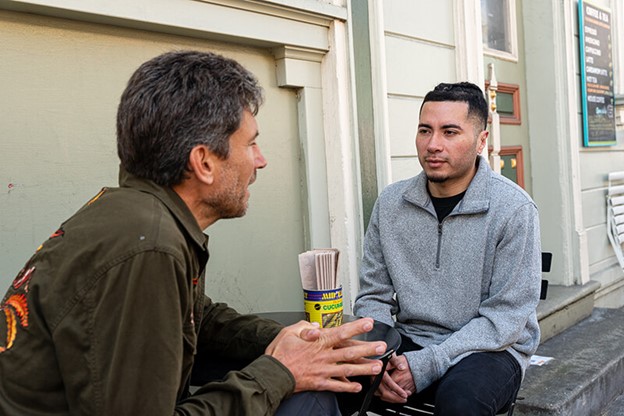
Volunteers work one-on-one with learners, focusing on the workplace English they need to know.
Learning the right way to listen
“The hardest thing is listening comprehension,” Guadalupe explains. “When you’re reading, language stands still. When you’re talking, it doesn’t.” And when someone is talking to you in a language you’re struggling with, it’s a bullet train coming at you.
To help their learners grasp an overall understanding of what they’re hearing, coaches start by telling them what not to do. “We don’t want learners to get hung up on a word, or to try to parse the speech—it’s too fast,” Guadalupe says.
Instead, the coaches boost their self-assurance. “These are adult learners. They know a lot about the world,” Guadalupe says. “It’s good to remind them of that, to help build their confidence with listening comprehension.”
Coaches, not teachers
To reach the Latinx learners she is targeting for the program, which is free, Guadalupe maintains a separate, Spanish-language website for them in addition to englishtogether.org. That site is geared toward volunteers and donors.
She also works closely with area schools and education organizations, in particular Familia Unidas, which serves working-class Latinx parents.
Volunteers commit to a total of 10 hours over as many weeks: eight coaching sessions plus introductory and training meetings. Their meetups with learners are either live or virtual, and at a time that’s convenient for both coach and learner.
Some coaches speak more Spanish than others, and thus are paired with the Latinx learners who speak the least English. As much as immersive learning is touted as the best way to learn a language, it isn’t always. Guadalupe gives the example of explaining irregular verbs to a learner: it’s easier to follow the explanation in one’s native tongue.
Guadalupe stresses that coaches are not teachers. Their role is not to insist on grammatical accuracy or to try to correct a learner’s pronunciation.
“It’s very hard to correct this,” Guadalupe says. “Unless you’ve been trained in articulatory phonetics, you shouldn’t try to.”
Coaches should, however, be generous with their praise.
“Learners,” Guadalupe points out, “vote with their feet. If they stay with the program, they stay with the same coach.” The most successful volunteers devote time to their coaching and their learner. Says Guadalupe:
“They see that ‘this is a person, not just my cleaning woman’.”
— Mim Harrison

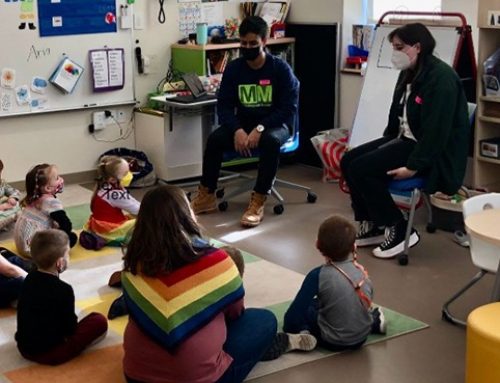

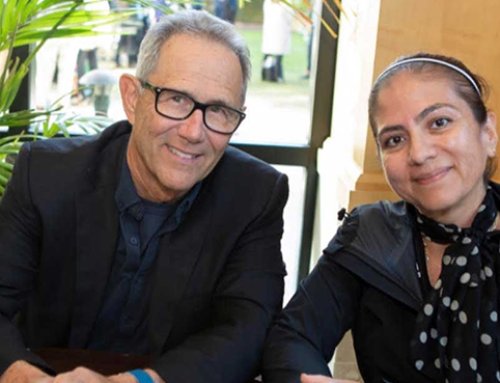

 You can book Steve for many different audiences
You can book Steve for many different audiences
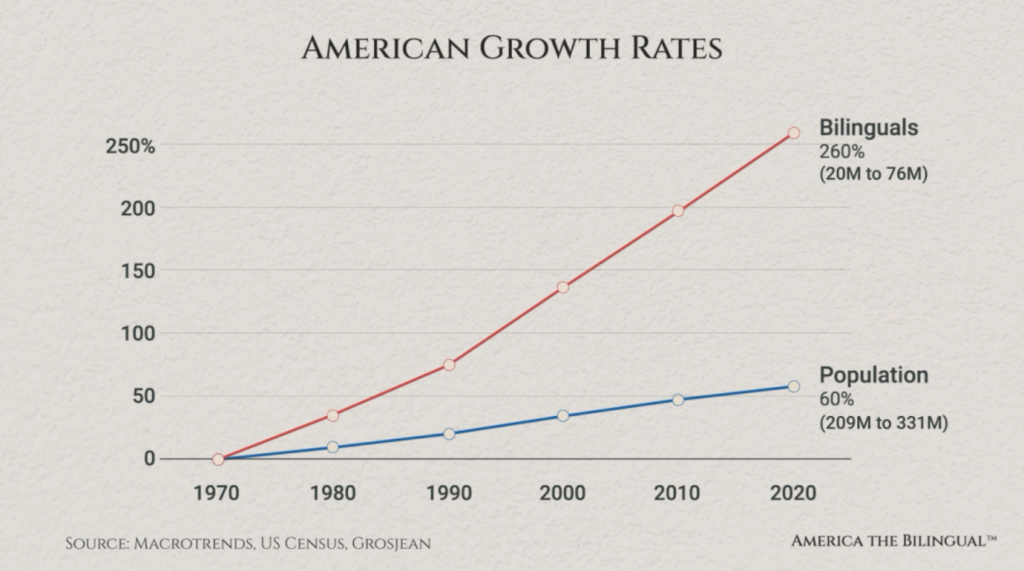
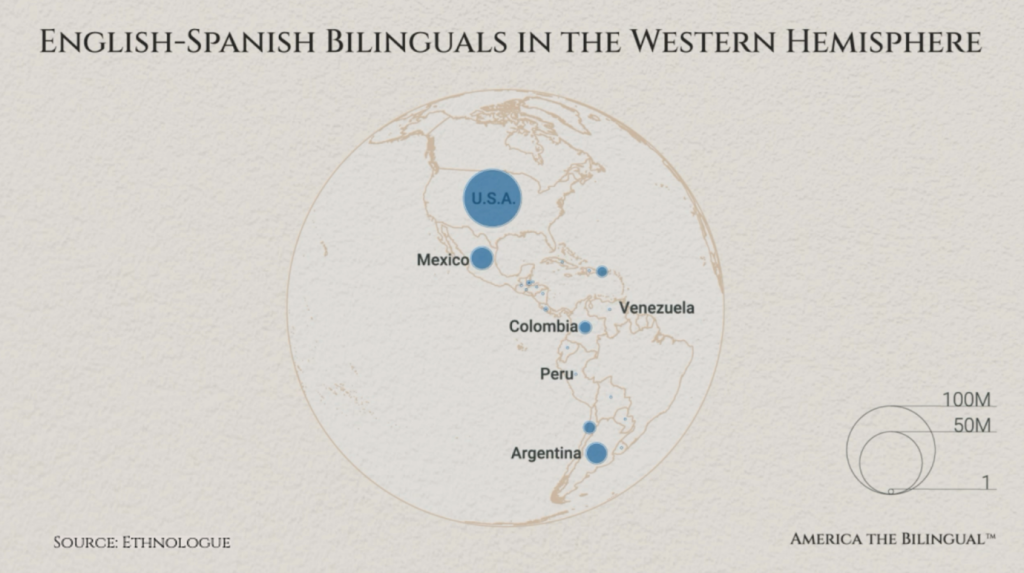






 First, know that she has one of those glorious English accents (or what all of us who are not English would call an accent), which makes her a natural for the audio book narration that she does. Although U.S. born, Caroline grew up in England and studied literature at the University of Warwick (fyi for American ears: that second “w” is silent).
First, know that she has one of those glorious English accents (or what all of us who are not English would call an accent), which makes her a natural for the audio book narration that she does. Although U.S. born, Caroline grew up in England and studied literature at the University of Warwick (fyi for American ears: that second “w” is silent).




Leave A Comment